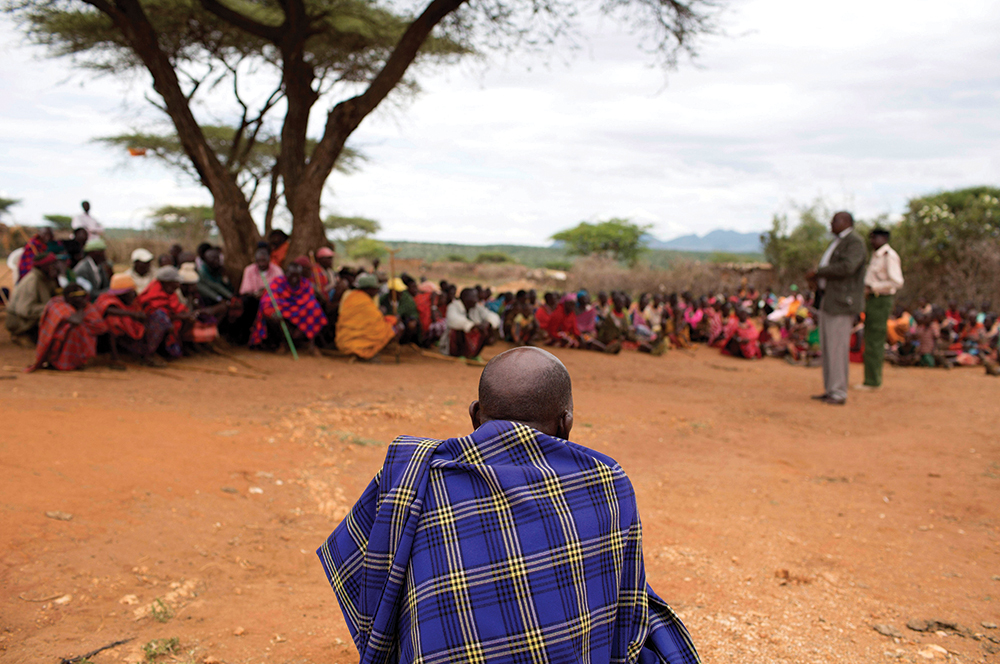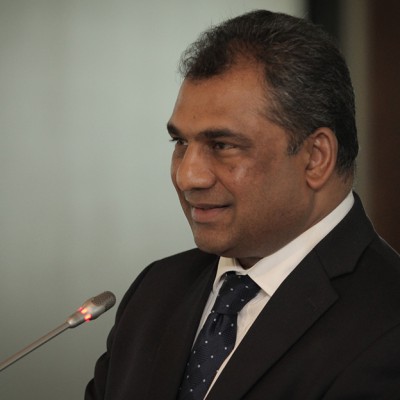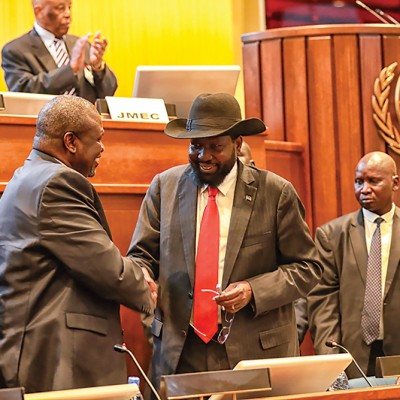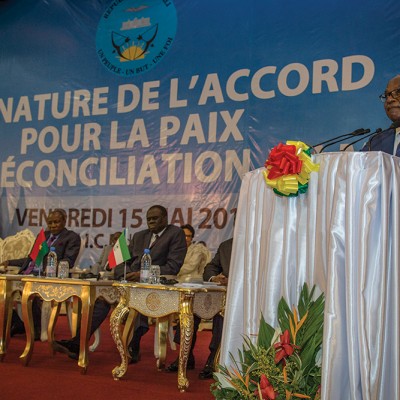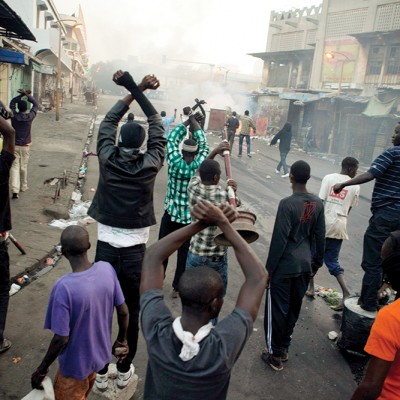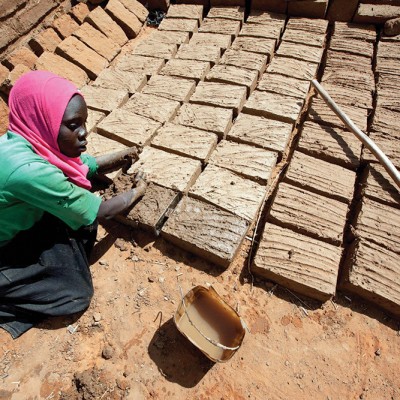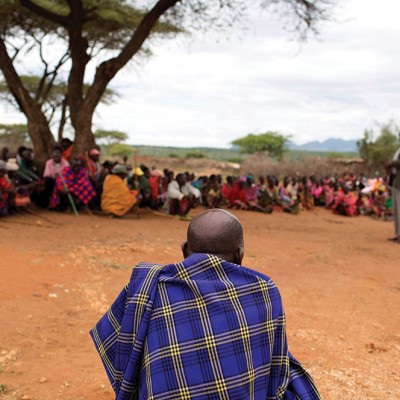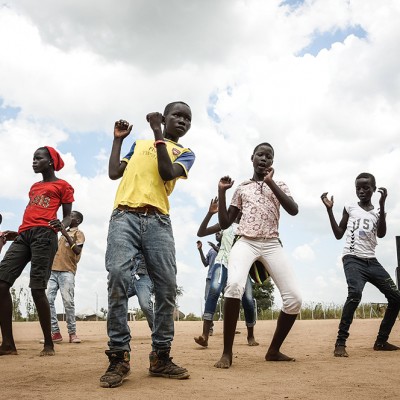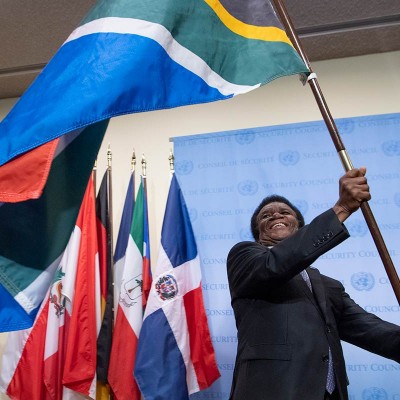Introduction
Long before Africa was colonised, and way beyond the advent of slave trade, African societies had institutional mechanisms as well as cultural sources to uphold the values of peace, tolerance, solidarity and respect for, and of, one another. These structures were responsible for “peace education, confidence-building, peacemaking, peacebuilding, conflict monitoring, conflict prevention, conflict management, and conflict resolution”.1 If these mechanisms were effective in handling and managing conflicts among the people, it was largely because they reflected the sociopolitical orientation of the African people, addressing all the social, political and economic conflicts among a people who lived a communal way of life. Thus, it was customary as well as common currency to happen upon people sitting down informally to discuss and agree on important issues.
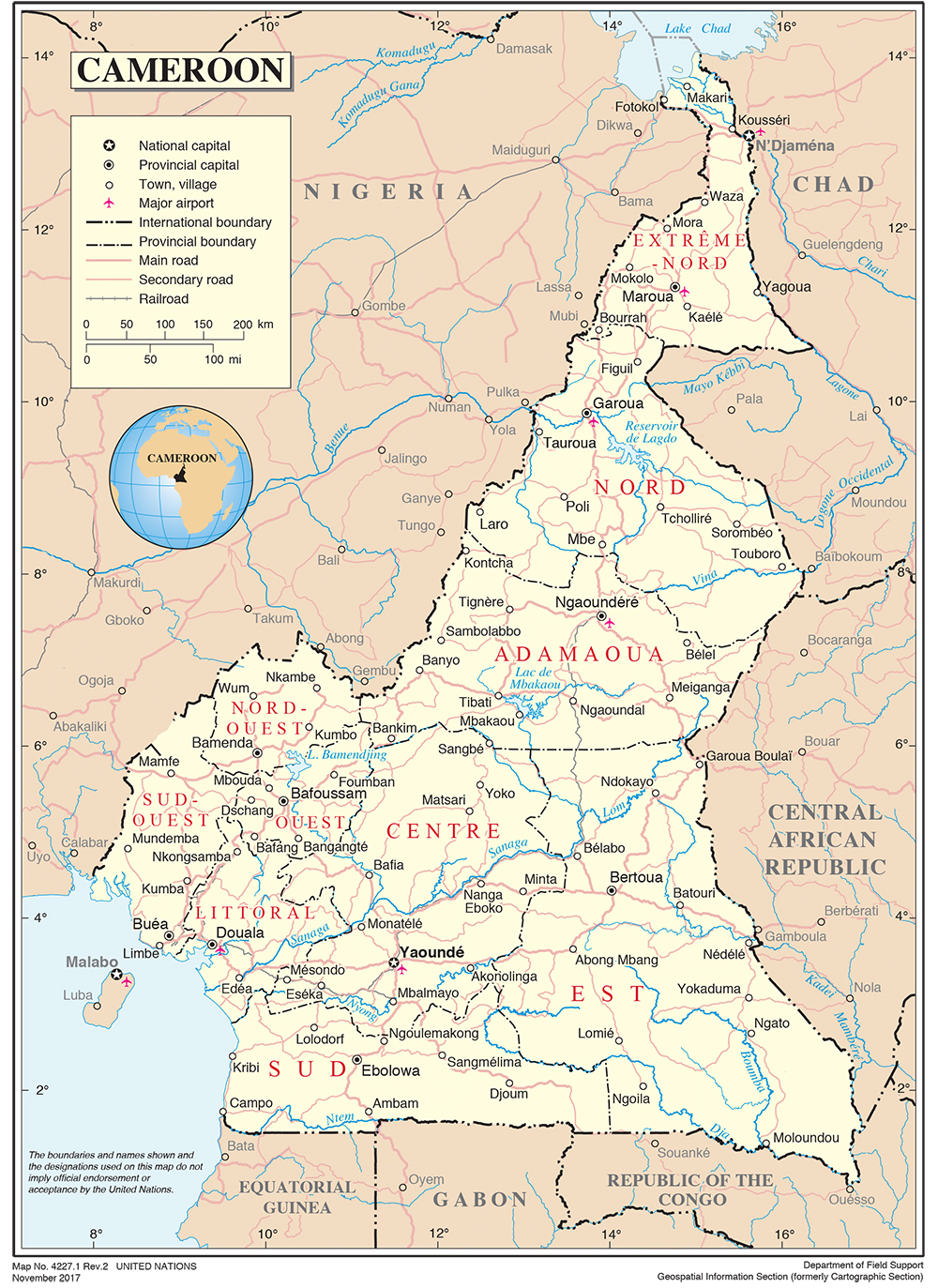
The traditional African system of government was open and inclusive, where all people could participate in the decision-making process. While the West practised majoritarian, or representative democracy Africans practised participatory democracy, where decisions were taken by consensus at village meetings, “variously called asetena kese by the Ashanti, ama-ala by the Igbo, guurti by the Somali, dare by the Shona, ndaba by the Zulu or kgotla by the Tswana.”2
However, with slave trade and colonisation, these indigenous institutions were largely weakened and even destroyed in many societies, especially as the colonial masters introduced law courts, which came to pronounce judgments rather than resolve conflicts according to the African administration of justice. Of course, in this new legal system, the police took up cases that, hitherto, were handled through traditional amicable settlements, with emphasis on reconciliation and the restoration of social harmony, rather than on punishment of the conflicting parties.
African traditional mechanisms of conflict prevention, management and resolution were largely effective and respected, and their decisions were binding on all parties, mainly because “the identity of an individual is linked to that of his or her family and these families are formed by the acceptance of marriage alliances”.3 Here, the importance of the family in the conflict management process was highlighted, as well as the role of the chiefs, elders, family heads and others, to anticipate and resolve conflicts.
The major sources of conflict in Africa were land, chieftaincy, personal relationship issues, family property, honour, murder or poisoning, and matrimonial fall-outs. In resolving these kinds of conflicts, the principles of equity and justice, which is entrenched in African customs and traditions, were upheld.
This article highlights the traditional institutions and methods of conflict resolution in the Kom community of Cameroon.
The Kom Experience: Traditional Institutions
The Kom people are one of the principal ethnic groups of the North-West Region of Cameroon – also known as the Bamenda Grassfields4 – where traditional government institutions are very important. The Kom kingdom, the second largest after Nso, is situated in the western central highlands of the Bamenda Grassfields, and occupies an area of about 280 square miles at an average altitude of about 5 000 feet above sea level. The capital of the Kom people is Laikom,5 which perches on a spur higher than 6 000 feet above sea level and is the seat of the ruler, the Paramount Fon, and his advisors, the kwifoyn, who continue to be the most respected leaders of the land.
Traditional institutions, sites and objects play “a quasi-religious role” in the arbitration, mediation, conciliation and reconciliation of conflicts at a micro and macro level in Kom society. The Kom geographical location, as well as its social and political history, also play a great role in conflict resolution.
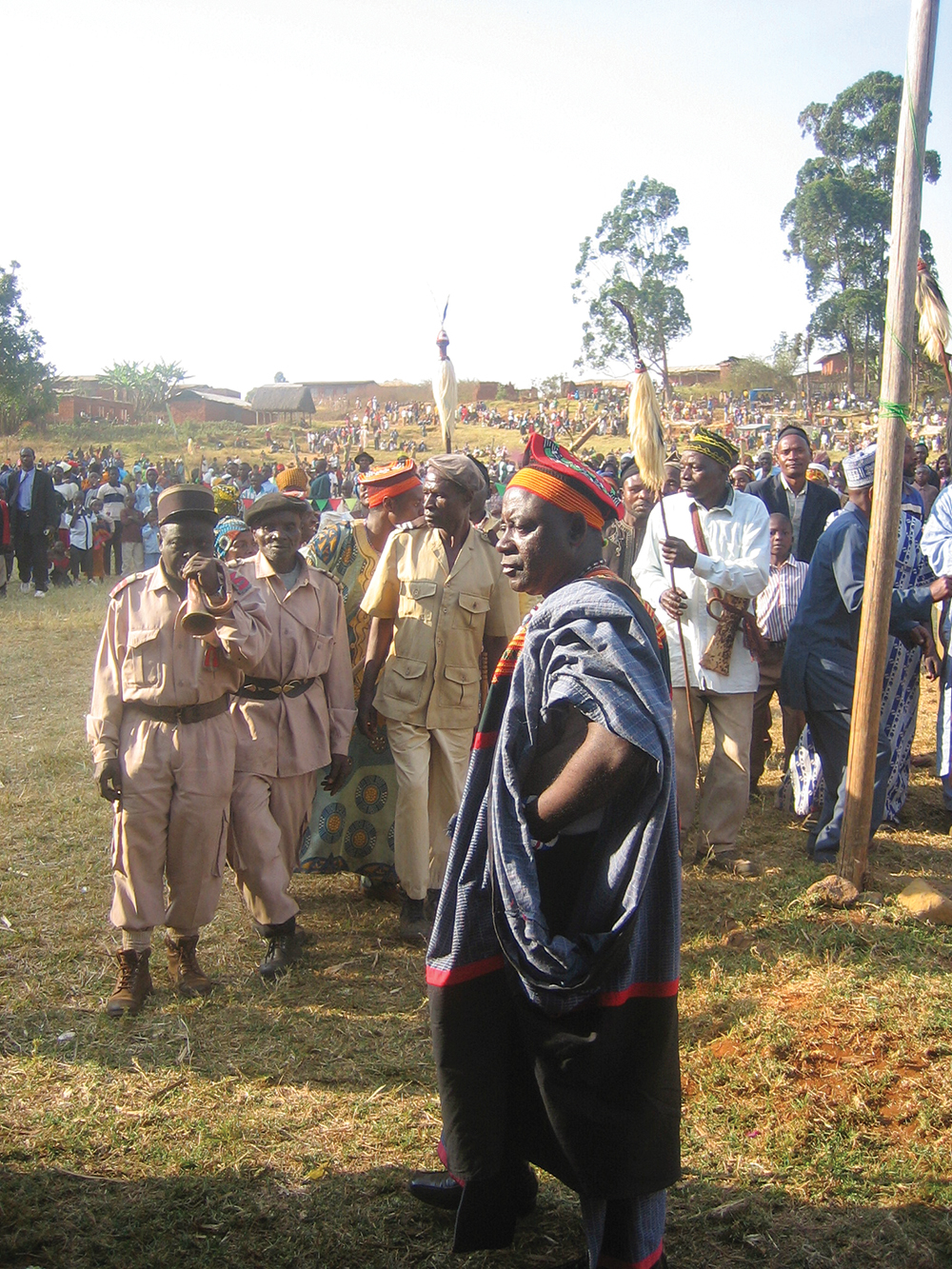
The Kwifoyn
This is a highly secretive and hierarchical society, and membership of its inner circles is sharply restricted. The authority of this society is of an impersonal kind, and its agents are not held to account by the populace. As the executive body of the Kom traditional government, it is an instrument of the Fon’s secular authority and, short of the personal intervention of the Fon, its decisions are not liable to appeal. Messages from the Fon are communicated to the Kom people through this institution, which is endowed with advisory, judicial and ritual functions. Its role in the Kom judicial system is that of arbitration, but not without the guidance of the Fon.
The Fon
As an institution, the Fon is regarded with infinite respect and surrounded with carefully guarded secrecy. From his religious position, sitting on the Kom ancestral chair and maintaining a nexus between his people and the ancestral spirits, he plays an instrumental role in the resolution of conflicts: that of chief priest and custodian of all land. This is particularly so because he is considered to be an embodiment of the beliefs, hopes, fears and aspirations of his people. Thus, his judicial functions include reconciling human and spiritual forces.
Ɨtwi: The Fon’s Traditional Court of Law
In pre-colonial African societies, crime was an act that offended the strong and definite dispositions of the collective consciousness, and so was considered harmful to the gods. This collective consciousness was enshrined in the laws of public and private crimes. Such transgressions, which were tried by the Fon’s court of law, ɨtwi, included certain forms of abuse, incest, witchcraft and treason. It must be emphasised here that in the ɨtwi, the Fon is part of the council, and not the council itself; thus, he sits with his council of elders and notables to judge the category of cases that are referred therein.
The Ntul Shrine
With an all-male membership open to the whole clan, this shrine is the centre of reconciliation, mediation and appeasement, which offers a forum for arbitration. If a person threatens the life of his neighbour or wounded him with a spear or cutlass, the two will be brought to the ntul shrine, where the first attempt will be reconciliation, while moral and legal sanctions will be meted out as well, and the wounded party will be treated with medicines from the ntul shrine.
Village Councils and Social Institutions
Kom social institutions can be aptly classified as those where membership is either exclusively for men, women or mixed. Although the functions of these social institutions may vary, the underlying purpose is to maintain peace, alliances, justice, bestow honour and sanction people for deviant behaviour.
The village council plays the role of the village court wherein minor civil and criminal cases are judged, while major contraventions are referred to the Fon. The masquerade society (jujus), or ndo mɨkum, is a regulatory society considered as the village parallel of kwifoyn, assisting the village head in the management of the affairs of the village. As such, these juju houses are considered as the eyes of the kwifoyn and examine cases relating to spiritual matters, especially witchcraft and poisoning.
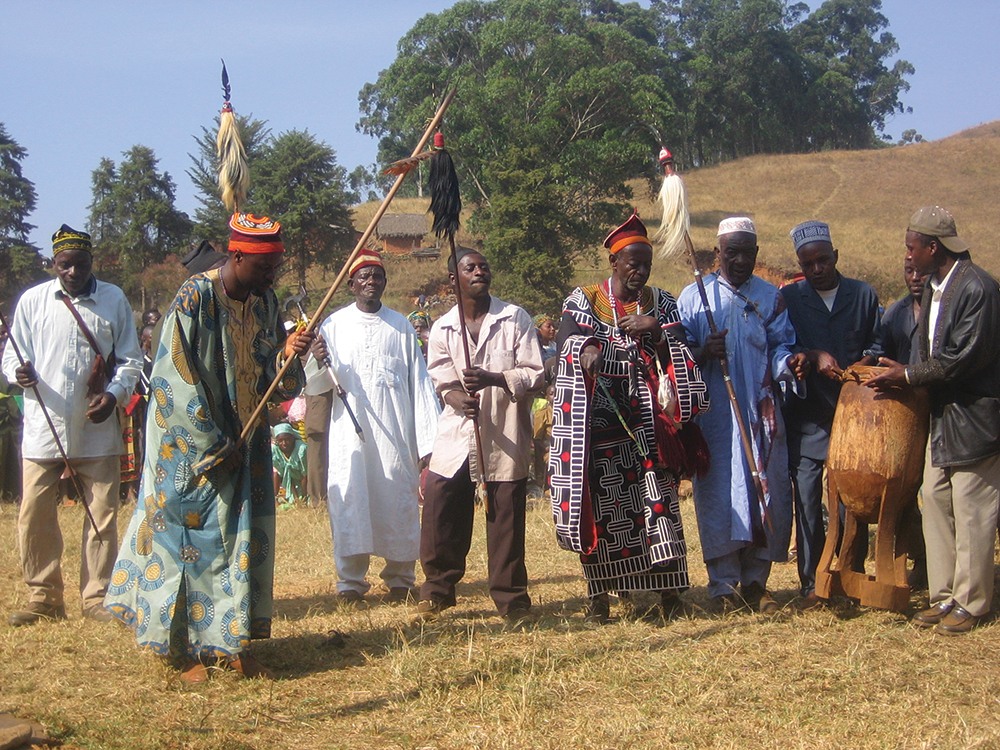
The Chong Society
This is a men’s secret society and the most powerful traditional organisation at the village level. It is the property of the Fon. To acquire or create chong, an individual may be authorised by the Fon or simply given the rights by the Fon as a favour. This society is empowered by kwifoyn to settle disputes and assist in the promotion of peace and harmony in the villages. It is thus tasked with tracking down and denouncing wrongdoers, whom it can reprimand and bring to justice, should they persist in wrong-doing. Commonly described by the Kom people as “power” or “authority”, it is a society of prestigious wealthier men, whose task it is to maintain peace or disassociate themselves from all violence. The fundamental role of chong, therefore, is the maintenance of peace in the community. It also plays a ceremonial role and, in this light, it has been described in the social sphere as a “high-life” or noble dance of the elders.6
The Fɨmbuen and Afaf Societies
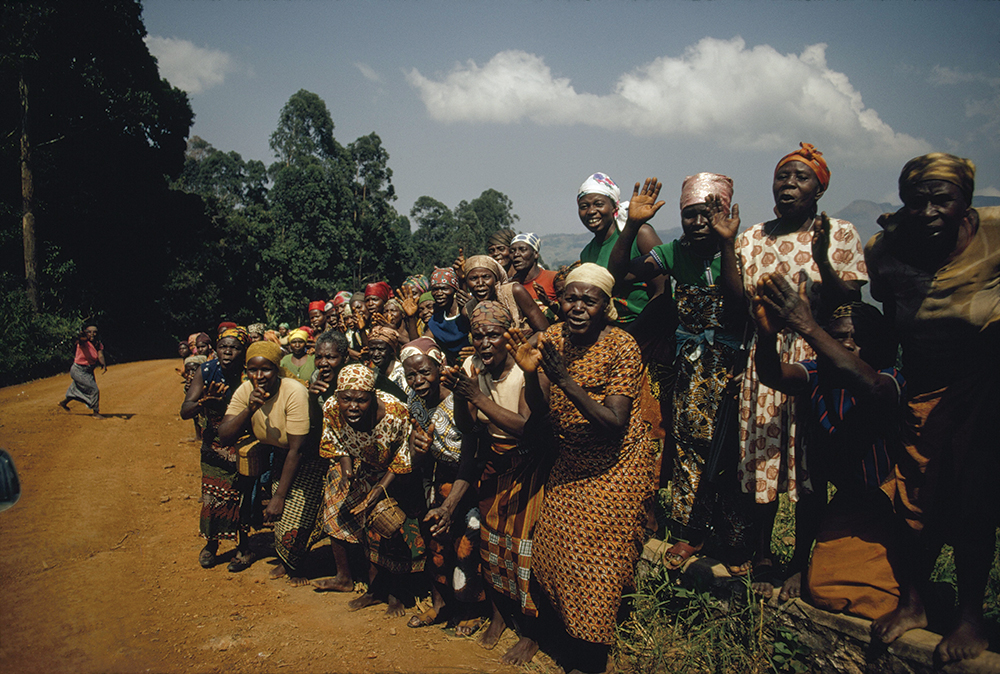
Kom traditional society is typically patriarchal. The man is the leader of the traditional society, the one who conceives and executes, while the woman is virtually absent from this aspect. Yet, lineage in Kom is matrilineal – that is, it is continued on the side of the mother and not the father, through the principle of consanguinity. There exist women’s traditional societies, with fɨmbuen and afaf standing out as the parallel of the men’s secret societies at the village level, performing similar roles in conflict resolution, and so constituting a women’s council, as it were. Although these women’s social institutions function mainly as bereavement assemblies, performing most of the funeral rituals of their members as well as those of some notables of the Kom Fondom, they equally act as the voice of women, speaking on their behalf against injustices done to them. A major criterion to belong is age, in addition to proof of having given birth, and a fee. Membership seats are distributed in the house according to established protocol, similar to a typical chong house.
Anlu7
Oral literature has it that the origin of the Anlu movement dates back to the Kom creation myth, to the settlement period when women checked territorial encroachment in the absence of their menfolk, who were out in the fields. Anlu thus gradually developed into an instrument of redress – a kind of female police force – with the women protecting womenfolk and equally punishing female crime, especially crime that bordered on the immoral.
This women’s movement was started in the early history of Kom to champion the rights of women and to make their voices heard – and, most especially, to punish domestic violence committed by men. Its first actions became evident during the Kom expansionist era, particularly when neighbouring Mujang warriors, realising that Kom warriors had left Laikom for a war expedition, moved in to capture the women and children and make them prisoners. It is recounted that upon arrival, the Mujang warriors met with strong resistance and so fled, thinking that they were chased away by men, for the women had disguised themselves as men. One Mujang warrior was caught and brought to the palace, where the women proved their identity and released the warrior with strict instructions: “Go and tell the rest, the warriors were Kom women.”8
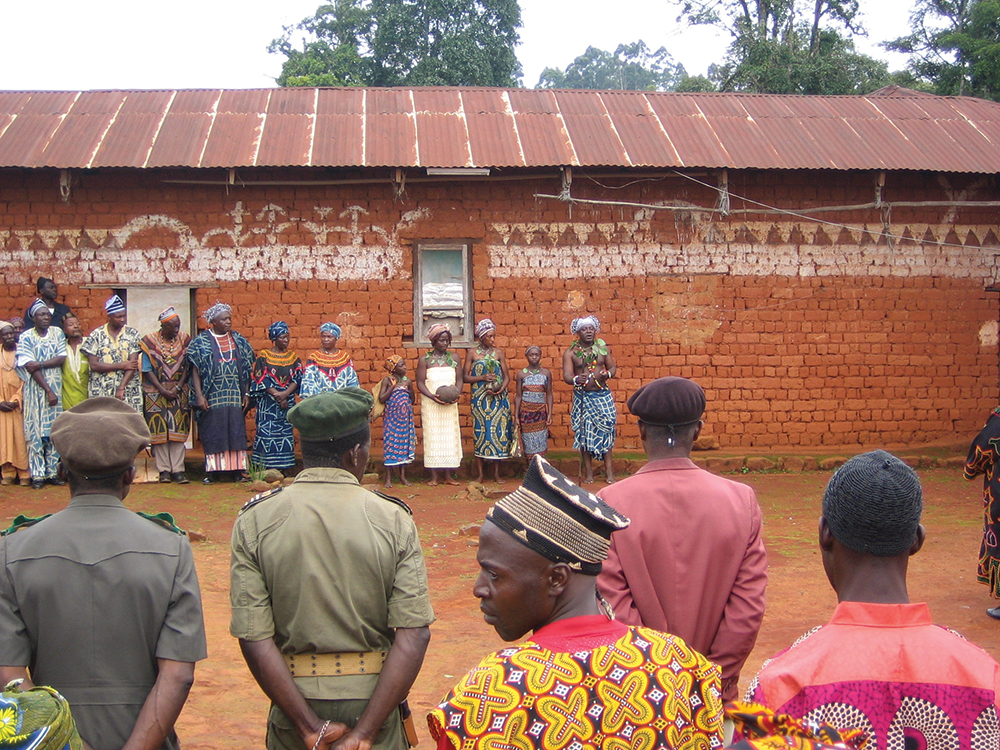
It is worth mentioning that the Anlu movement brought to the fore a number of social and political tensions that, hitherto, had been simmering for many years: the erosion of both traditional and colonial authority, power struggles between “modern” youths and conservative elders, shifting gender relations, and cultural conflicts accelerated or perhaps instigated by the missionary presence.
Kom Traditional Conflict Resolution
Paul Nkwi asserts that whoever puts into jeopardy the concrete realisation of the common objectives or the achievement of the bonum commune creates a situation of conflict and becomes the enemy or the less friendly partner.9 This lends credence to the idea that in conflict resolution, the principles of equity and justice, which are entrenched in African customs and traditions, are upheld. In fact, in Kom traditional society, there is no award for winning an argument. As such, the end result of conflict resolution is to accommodate all parties involved in the conflict, through genuine collaboration by all, in the search for effective compromise. In doing so, unnecessary competition is avoided, because the ultimate aim of conflict resolution is amicable settlement by persuasion, mediation, adjudication, reconciliation, arbitration and negotiation, not necessarily reverting to the use of force or coercion at all cost, or at any cost.
In typical Kom traditional society, therefore, socialisation is an important factor in conflict resolution. Kom children are raised to consider that a quarrel or a fight with others is a quarrel or a fight between blood relations, and so it becomes imperative to avoid injury and harm, as well as avoiding situations of always trying to win at all cost. In Kom, this is a way of life, which is transmitted through myths, the use of proverbs, folktales, songs and idioms to children at a tender age, so that they may grow seeing human existence as unified and integrated.
To further inculcate this way of life, especially in a bid to establish truth, guilt and to discourage dishonest attitudes and evil actions, it was common practice in Kom traditional society to prevent, manage and resolve conflict through oath-taking, mostly at the shrine of a powerful deity, over an instrument that acted as a medium for contacting the deity. To avoid shame or even death, the consequences of oath-taking on falsehoods were made widely known.
To promote the virtues of peace, solidarity, harmonious living, respect for others and honesty, Kom traditional society instituted the celebration of festivals, during which these values were extolled in song. Rituals and sacrifices were performed to the village deities and ancestors for peace, protection, good work, fertility, and so on. This culture of communal life created an ideal environment for conflict resolution, because it was also an opportunity for a mutual exchange of privileges, goods, favours and obligations, among others. Reciprocity equally fostered peaceful coexistence and, consequently, eliminated the likelihood of conflict and wars.
Sanctions were imposed on families and individuals who contravened Kom customs and traditions. This was mainly to prevent stealing, wilful murder, incest, abuse of elders, wilful damage to property, lying, bearing false witness, poisoning and rape. It was also largely believed that deities could inflict sanctions through accidents, sickness, death, famine, poverty, misery, barrenness and loss of children, in addition to societal exile, ostracism, fines, compensation, restitution and the rendering of apology.
Conclusion
Long before the slave trade and colonisation, indigenous African society had its own traditional methods and mechanisms of preventing, managing and resolving conflict. From the Kom experience, these ideas were well-entrenched in the traditions, customs, norms and taboos of the people; a way of life, as it were. As a people the Kom have not lost the capacity to co-exist peacefully, to commune together, to respect one another, to negotiate, to forgive and to reconcile in resolving their conflicts. In juxtaposition to what occurs in today’s modern, formal judiciary system, with the introduction of law courts, paralegals, the police and other forces of law and order, justice does not always bring about peace and co-existence to a people. As has been made evident in this article, traditional dispute resolution mechanisms may achieve both, considering that negotiation, mediation and reconciliation have deep roots in indigenous communities, which still have a strong belief in the principles of common humanity, reciprocity and respect for one another and for the environment. In Kom traditional society especially, conflict resolution mechanisms have been binding on the indigenous people for the simple reason that informal mediation renders conflict resolution flexible, expeditious and fast; it fosters relationships and it is cost-effective.
Endnotes
- Ademowo, Johnson (2015) ‘Conflict Management in Traditional African Society’, Available at: <https://www.researchgate.net/publication/281749510> [Accessed 20 September 2018].
- Ayittey, George (2014) ‘African Solutions, African Problems, Real Meaning’, Available at: <https://www.panafricanvisions.com> [Accessed 21 September 2018].
- Ademowo, Johnson (2015) op. cit.
- The Bamenda Grassfields is also known as the Bamenda Highlands, the Western High Plateau or the Western Highlands. This plateau was once heavily forested, but repeated cutting and burning by people forced the forest back to areas along the waterways and allowed grasslands to expand into the area, leading to its name.
- In the Kom language (itanghi-i-Kom), this literally means the “country of Kom” or “Kom country”. According to Kom history, during the 19th century migration in Cameroon, most tribes moved south in search of better economic opportunities. The Kom people, who originated from upper Mbam in Tikari, moved in search of fertile soils and in the middle of the 19th century, if not earlier, finally settled in Laikom.
- The Kom Heritage Foundation (2014) A Short Cultural History of the Kom People. Bamenda: Destiny Prints, p. 33 cites Nkwi, Paul and Warnier, Jean-Pierre (1982) Elements for a History of the Western Grassfields. Yaounde, Cameroon: SOPECAM.
- David Chiatoh, on the Afo-a-Kom Yahoo Chat Group in 2003, situates the origin and explains the meaning of Anlu: “Anlu could be translated as an exodus or mass movement for some purpose at some destination. The Kom people, after their settlement, and until recently, had hunting reserves out of Kom, and whenever the men left for such expeditions, it was said that Laikom was out – ‘lu’ – which meant that the men had ‘lu’ for hunting. It was on one of such outings that a neighbouring kingdom, Mejang, attacked Laikom, with only women present, and what ensued saw the birth of the ‘Anlu Movement’ as well as the capture of the Mejang kingdom by the Kom fondom. As the paramount women’s correctional society in Kom, Anlu had jurisdictional powers over both men and women and so could sanction a couple about their child-rearing, for example.”
- The Kom Heritage Foundation (2014) op. cit., p. 38.
- Nkwi, Paul (1987) Traditional Diplomacy: A Study of Inter-Chiefdom Relationships in the Western Grassfields, North West Province of Cameroon. Yaounde, Cameroon: Publication of the Department of Sociology, University of Yaounde, p. 64.

